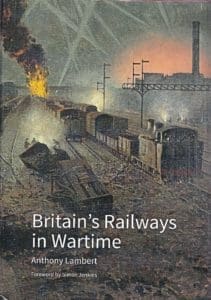By Anthony Lambert (hardback, Historic England/The Railway Heritage Trust, 216pp, £25, ISBN 978 1 84802 482 3)
Here is a seminal reference work documenting one of the major, yet often overlooked tools of modern warfare, the railways. A timely publication indeed following this year’s commemorations to mark the 100th anniversary of the Armistice and the sizeable part played in them by the heritage sector, as showcased on pages 46-51.
The story begins in 1830, when the Liverpool & Manchester Railway carried troops to Liverpool docks en route to Ireland where they were dispatched to suppress trouble.
Enjoy more Heritage Railway reading in the four-weekly magazine.
Click here to subscribe & save.
The powers that be were, however, slow on the uptake in recognising the military benefits of railways. It was not until 1842 that a law was passed giving preferential treatment to the Army on railways, and two years later, the Commons was told that a battalion of men could now make a 17-day march from London to Manchester by train in just nine hours.

It was the British use of railways in 1855 in the Crimean War that firmly established them as part and parcel of future strategy. With each conflict, the countries involved learned more and more about the military potential and use of railways; the Franco-Prussian War of 1870-1 has been dubbed the first and only major railway war of the 19th century.
All of this laid the foundation for the vital part that railways played in both world wars, and separate chapters detail their use on the home front and in theatres of war in each. There was the carriage of vast quantities of troops by the major railway companies to the embarkation ports, the supplying of troops to the fronts, the use of women as labour while the ranks of railwaymen were depleted for war service, and the use of ambulance trains.
A final chapter documents the plethora of monuments around the railway network recalling soldiers who gave their lives in the conflicts and also the victims of warfare, such as bombing raids. If only for the complete gazetteer of such monuments, this is an essential reference work. In making such a huge subject readily accessible, this is a masterpiece.
LUCID, CONCISE AND FASCINATING HISTORICAL OVERVIEW
Read more Reviews, Letters, Opinion, News and Views in Issue 249 of HR – on sale now!
Advert
 Enjoy more Heritage Railway reading in the four-weekly magazine. Click here to subscribe.
Enjoy more Heritage Railway reading in the four-weekly magazine. Click here to subscribe.



